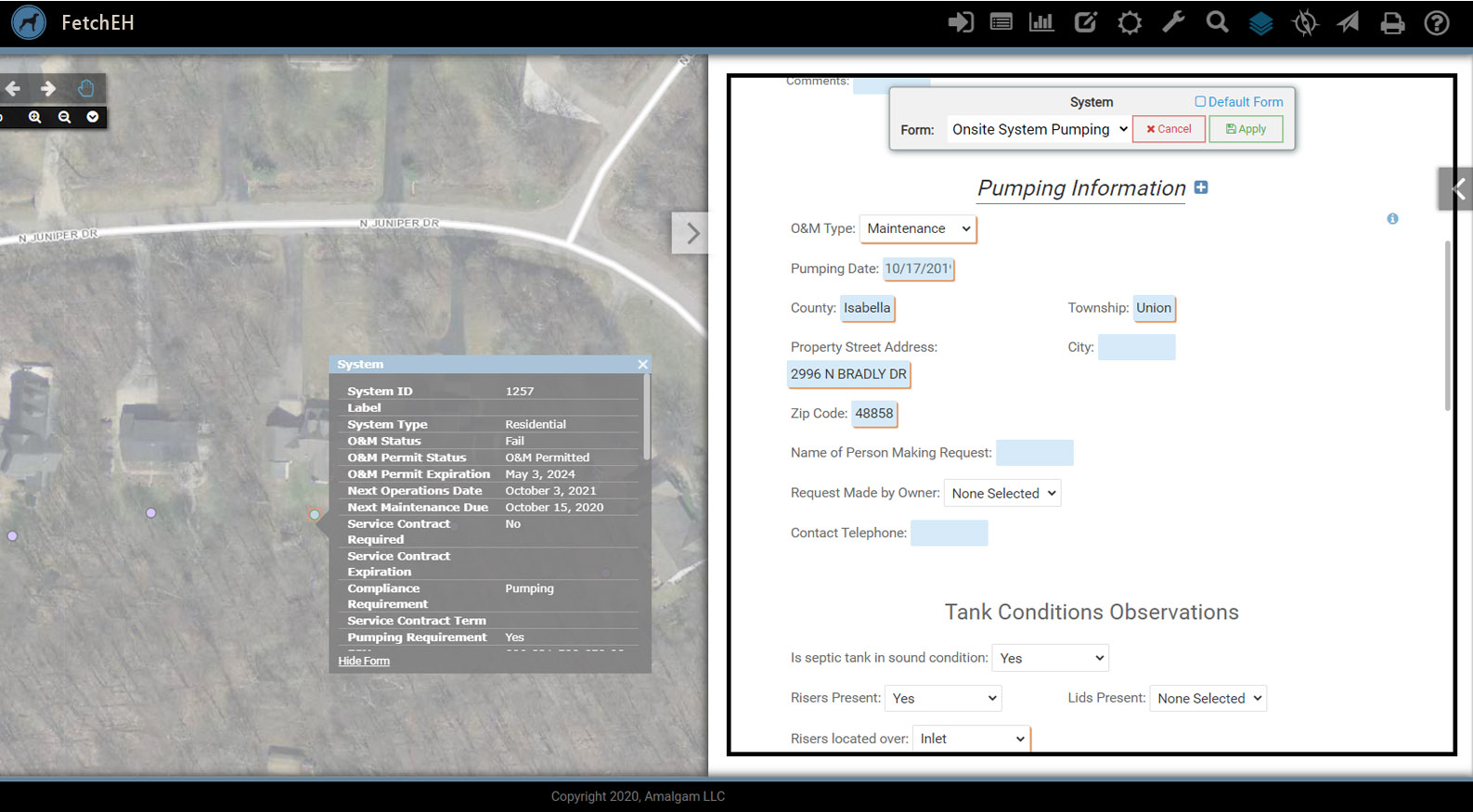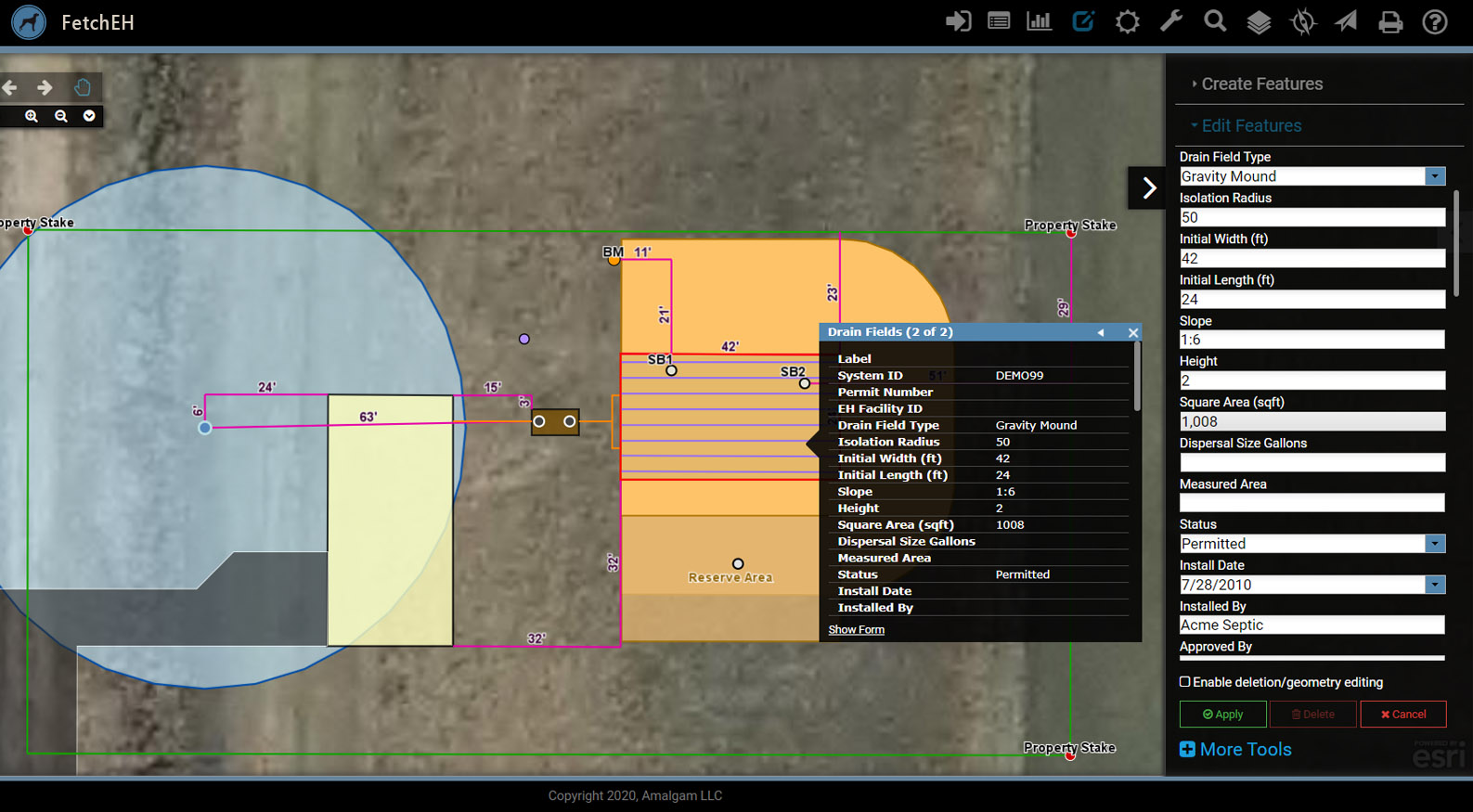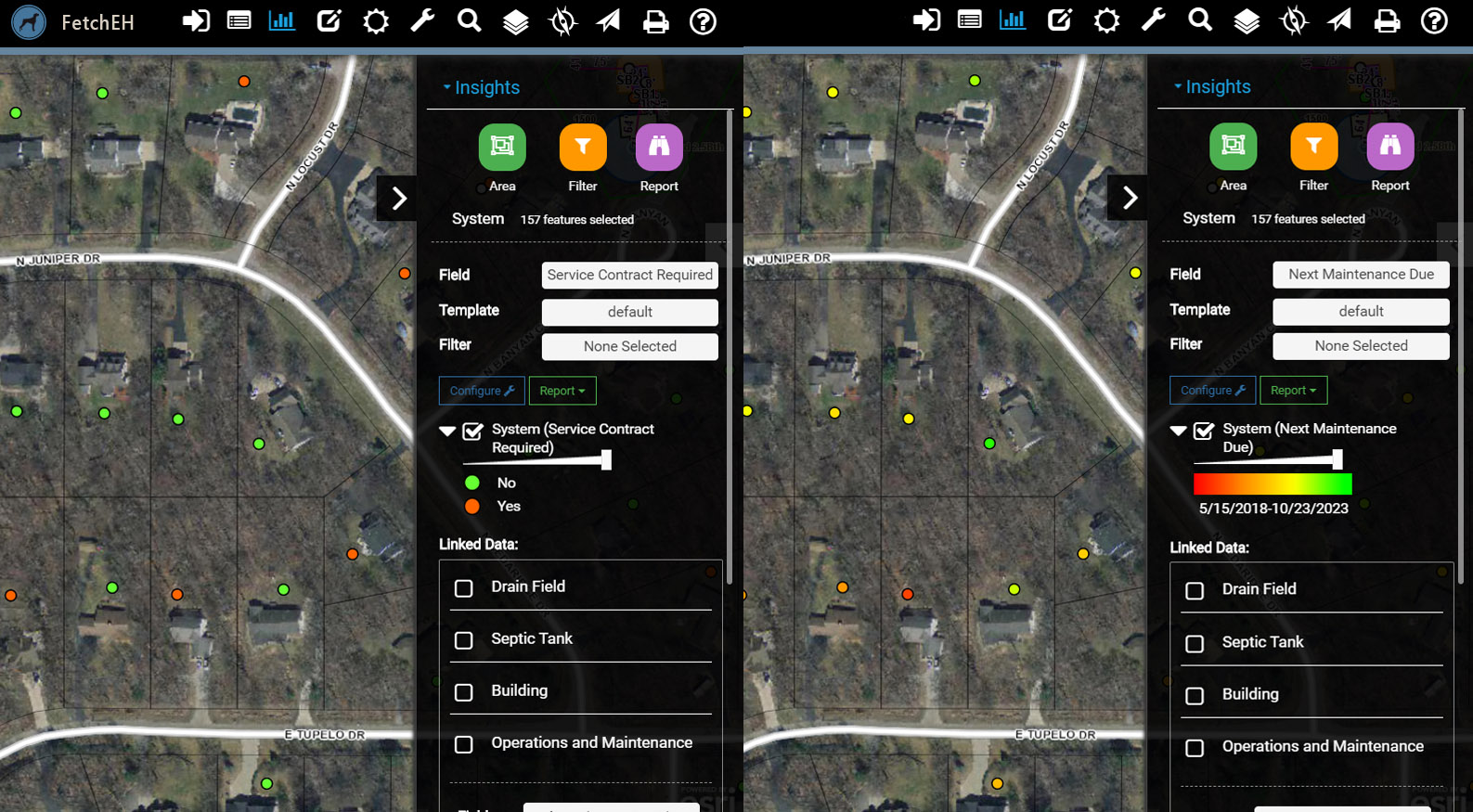EH Bellman
Location, data and EH. A better way forward.
EH Bellman - November.19.2018
Operations & Maintenance
The need to track Operations and Maintenance (O&M) for onsite systems has become more prevalent as more communities adopt O&M regulations, which require some degree of routine inspections and/or maintenance of onsite systems. These requirements may focus solely on advanced treatment systems, or include inspections for all system types, routine maintenance and even time of transfer inspections. However, no matter what level of O&M requirements exist in a community, how regulators track O&M events is crucial for not only supporting the O&M regulations, but also for establishing how O&M data is used as a management tool.

Entering O&M Events Using Forms
At a minimum, O&M should be tracked in a digital system rather than relying on paper. Digital systems offer the best opportunity to support O&M regulations because they provide the most efficient means of tracking O&M events, including data collection, managing time events (next inspection date, service contract expiration, pumping date, etc.), creating reports and general records management. Most digital systems used for O&M are similar to permitting systems - they do a good job at managing a transaction and records, but do not offer any options to use O&M data to gain insights about your onsite inventory.
Beyond a Transaction
If you have read any of our other posts, you know we believe that onsite wastewater data, including O&M data, has value beyond simply satisfying a transaction or general records management need. This is where software, like FetchEH, can extend the value of O&M data so that it can be used as a management tool to understand onsite systems from a different perspective.

Mapped Onsite Systems Provide O&M Foundation
FetchEH provides the data entry and records management tools to help regulators effectively track O&M events for an onsite system, but it also let’s them map the onsite system. The result is that any O&M data collected for an onsite system, along with other system data (tank type, tank size, drain field type, age, installer, etc.) is now tied to a location on a map, which in turn can be used to help regulators ‘see’ their data, including map visualizations. The map visualizations and other Insights tools, enable data exploration, analysis, reporting and map output for O&M data and any other onsite system data that is collected.

Visualizing O&M - Service Contract Required & Next Maintenance Date
The Location Difference
The difference with FetchEH is that onsite system data is tied to a location on the map and managed in location-based software. This combination of location-based onsite data and location enabled EH software is what extends the value of O&M data beyond only serving a transaction and records management need. It is this combination that provides regulators with tools designed to help them gain new insights and manage onsite systems more effectively and efficiently. The power of location certainly starts with the visual of simply seeing your data, but it also extends into more value added tools like asking questions about your data and visualizing the results, performing analysis, reporting and other tools that result in better information, more knowledge and a deeper understanding of onsite systems in your community.
Similar to permitting systems, not all O&M software is the same. So, when you evaluate O&M software, be sure to get in touch to schedule a demonstration and learn more about the benefits of using a location-based approach to manage O&M in your community.
More Posts